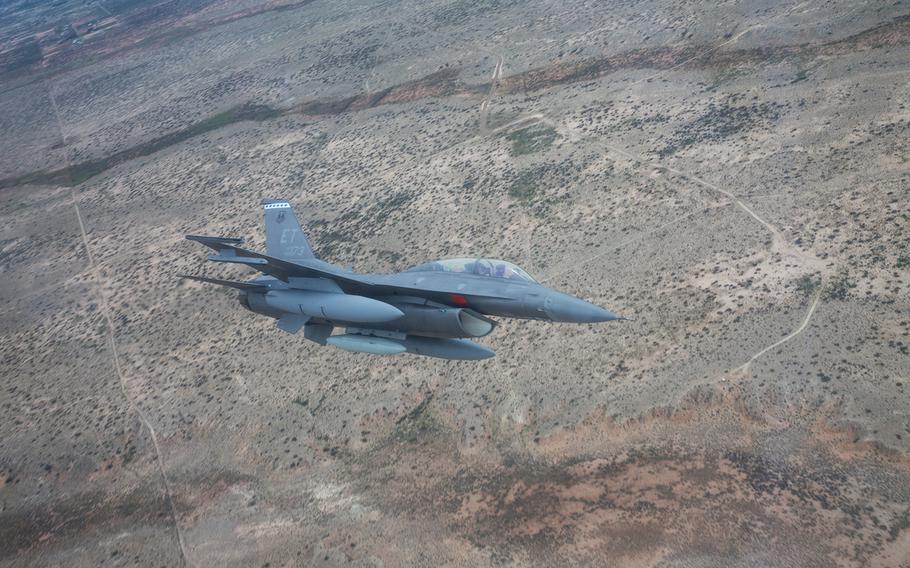(Tribune News Service) — The federal government should regulate toxic PFAS chemicals, New Mexico Environment Secretary James Kenney told a Senate committee Wednesday.
Kenney testified remotely before the U.S. Senate Committee on Environment and Public Works about the contamination at two Air Force bases.
The hearing also featured testimony from officials in West Virginia and Pennsylvania dealing with PFAS contamination.
"The mission of my department is to protect the health of New Mexicans, and the reality is I can't do so when it comes to PFAS," Kenney said. "It's not for a lack of scientific data or remedial technology. What we're lacking is a federal regulatory framework."
The U.S. Environmental Protection Agency has non-enforceable health advisory levels for two chemicals in the class of per- and polyfluoroalkyl substances, or PFAS, which have been found in water supplies across the U.S.
"What we're dealing with here is an almost universal, persistent toxin whose presence in our water — at levels measured in parts per trillion — creates a very real risk of adverse developmental effects to fetuses and breastfed babies," said the committee's chairman, Sen. Tom Carper, D-Del. "This toxin is also associated with testicular and kidney cancer, liver tissue damage, as well as harmful changes to the thyroid and the immune system."
In 2018, the U.S. Air Force first disclosed the PFAS plumes at Cannon Air Force Base, near Clovis, and Holloman Air Force Base, near Alamogordo.
PFAS levels at Cannon were 370 times the EPA health advisory level. Holloman levels were 27,000 times the EPA advisory.
"This is clearly a public health, environmental and economic crisis for New Mexico and other states," Kenney said.
The toxic chemicals likely leaked into groundwater from firefighting foam used in training exercises.
Earlier this month, the Air Force announced a $16.6 million contract to AECOM/Brice for a water treatment system at Cannon's southeast corner.
Christipher Gierke, Cannon's remedial project manager, said the small-scale pilot project will test methods of removing PFAS from groundwater leaving the base.
"We're aware how long this process feels for the people of Clovis," Gierke said in an Air Force news release. "We've listened to their concerns and worked tirelessly to implement this study to get an interim treatment method in place quickly."
New Mexico is suing the Department of Defense over the contamination.
Kenney said the toxic chemicals pose an "imminent and substantial" threat to residents such as Clovis dairy farmer Art Schaap, who euthanized his cows that had elevated PFAS levels.
"(Schaap) lost millions in milk sales, and is now faced with disposing of thousands of PFAS-contaminated cow carcasses," Kenney said.
A $1 million state Legislature appropriation is funding NMED's study of the military bases and well water supplies in Curry and Roosevelt counties.
The agency is also working with the U.S. Geological Survey to test water across the state.
New Mexico agencies fear that the pollution could harm outdoor tourism, Kenney said, similar to effects from the Gold King Mine spill in Colorado in 2015.
Theresa Davis is a Report for America corps member covering water and the environment for the Albuquerque Journal.
(c)2021 the Albuquerque Journal (Albuquerque, N.M.)
Visit the Albuquerque Journal (Albuquerque, N.M.) at www.abqjournal.com
Distributed by Tribune Content Agency, LLC.

An F-16 approaches Holloman Air Force Base, New Mexico, April 21, 2019. (John Raven/U.S. Air Force)